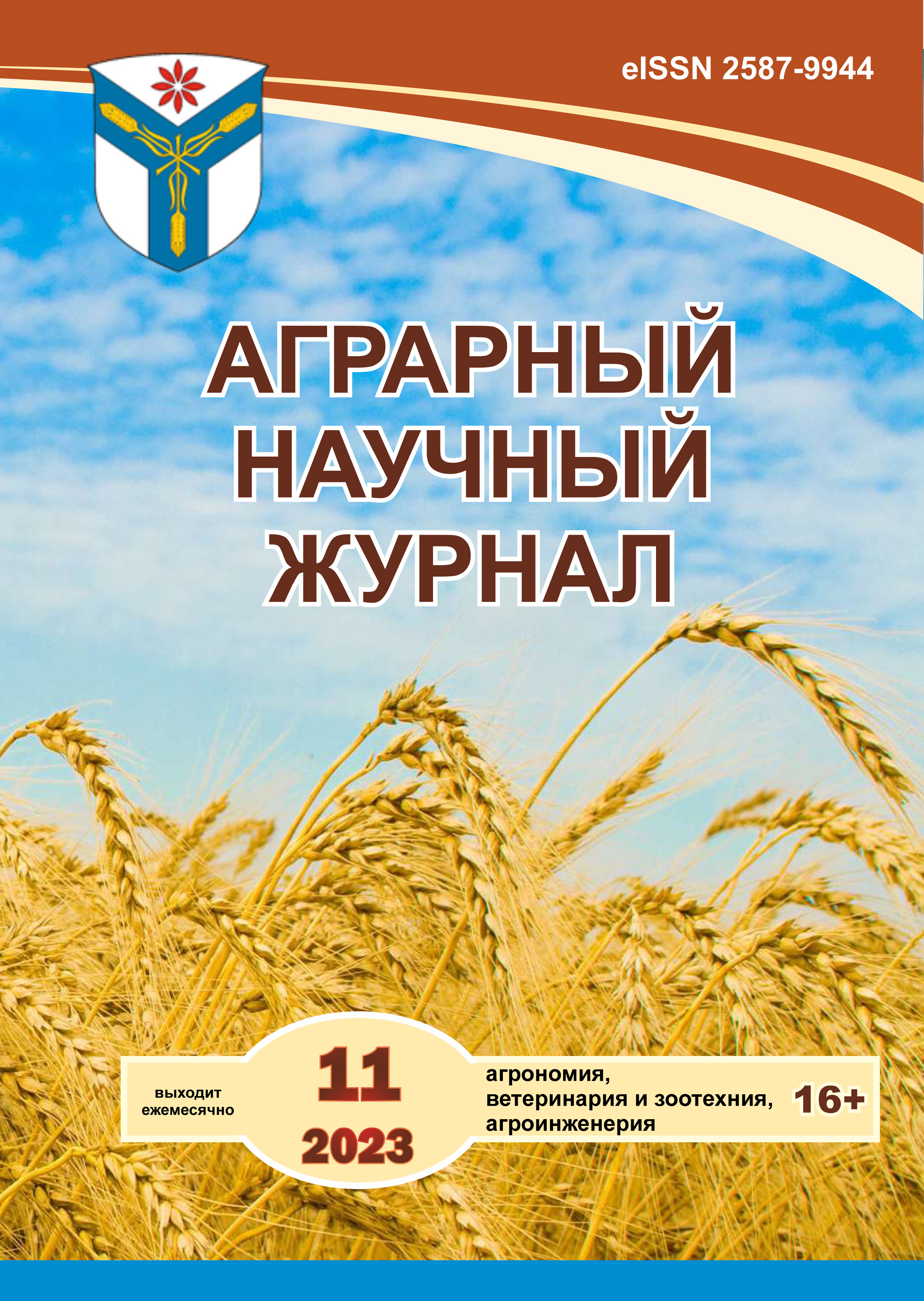Water permeability of dark chestnut soil and agrochemical factors determining chickpea yield
DOI:
https://doi.org/10.28983/asj.y2023i11pp130-135Keywords:
water permeability, humidity, soil density, chickpeas, mineral fertilizers and based on humic acidsAbstract
A six-year analysis of changes in soil water permeability according to the basic tillage options is provided. Plowing with a PBS -10 P plow reduced water permeability by 3.1%. An increase in soil density by 6.3% for no-tillage and by 9.8% for minimum tillage reduced water permeability by 13.3 and 41.9%, respectively. Calculation of the multiple regression equation and full correlation analysis showed that the maximum influence on water permeability is exerted by the depth of the main cultivation - 44.92%, soil density determined this indicator by 38.17%, humidity by only 0.91%, the share of unaccounted factors was 16% . The yield of chickpea grain varied from 0.39 - 0.65 t/ha in 2020 (GTCMay - August = 0.20) to 1.54 - 2.12 t/ha in 2023 (GTCMay - August = 0. 64). Over six years of observation, according to factor A (basic tillage for chickpeas), the maximum yield of chickpea grain without the use of agrochemicals was noted on plowing: 1.19 t/ha (PLN-8-35) and 1.20 t/ha (PBS-10 P). Duringnon-moldboard processing (SSD-4 and PChM-4), the yield decreased by 10.9%, with a minimum (PM 7?3) by 22.7%. Foliar feeding with mineral fertilizers and fertilizers based on humic acids during the phases of branching and the beginning of budding of chickpeas of the Zoovit variety increased the yield by 11.9–14.7%.
Downloads
References
Borodychev V.V., Pimonov K.I., Mikhailichenko E.N. Agrochemical assessment of the use of mineral fertilizers and biological products in the cultivation of chickpeas in the Rostov region. Soil Fertility. 2018; 1: 34-37.
The influence of microfertilizers on the coefficient of water consumption and the yield of chickpeas in the Saratov Trans-Volga region / A.P. Solodovnikov et al. The agrarian scientific journal. 2021; 5: 46-49.
The influence of mineral fertilizers and biological products on the yield of chickpeas on southern chernozem / E.N. Mikhailichenko et al. The agrarian scientific journal. 2018; 4: 16-21.
The influence of basic tillage methods on the optimization of water regime and chickpea yield / A.Yu. Levkina et al. Feed production. 2018; 12: 14-17.
Share influence of water-physical properties of soil and weather conditions on the yield of chickpeas in the Saratov Trans-Volga region / A.P. Solodovnikov et al. The agrarian scientific journal. 2021; 1: 43-47.
Dospehov B.A. Field experiment methodology. Moscow: Agropromizdat, 1985. 351 p.
Kiseleva T.S., Rzaeva V.V. Reserves of available moisture when cultivating chickpeas in the northern forest-steppe of the Tyumen region. Agrarian Bulletin of the Urals. 2019; 9(188): 2-7.
Plant growing in the Central Black Earth Region of Russia / V.A. Fedotov et al. Voronezh, 2019. 581 p.
Rzaeva V.V., Lakhtina T.S. Cultivation of chickpeas in the Northern forest-steppe of the Tyumen region. News of the Orenburg State Agrarian University. 2018; 5(73): 87-90.
Solodovnikov A.P., Pimonov K.I., Gudova L.A. The influence of the main treatment on the water-physical properties of dark chestnut soil and the yield of chickpeas. Scientific journal of the Russian Research Institute for Land Reclamation Problems. 2020; 1(37): 140-153.
Solodovnikov A.P., Denisov E.P., Gudova L.A. Water consumption of lentil crops with energy-saving tillage and the use of “Potassium Humate” in the Volga region. Fodder production. 2017; 5: 16-19.
Shein, E.P. Agrophysics /E.P. Shein, V.M. Goncharov. Rostov on Don: Phoenix, 2006. 397 p.
Downloads
Published
Issue
Section
License
Copyright (c) 2023 The Agrarian Scientific Journal

This work is licensed under a Creative Commons Attribution-NonCommercial-NoDerivatives 4.0 International License.








